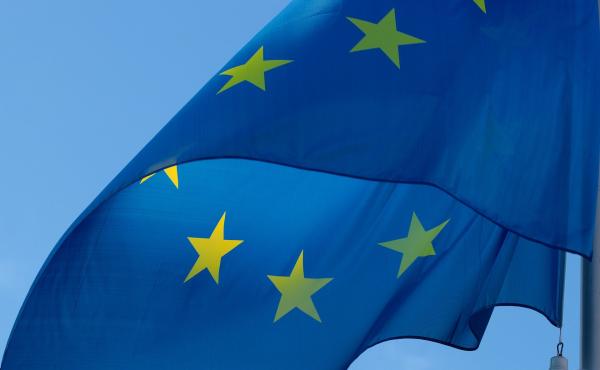
The ECGI blog is kindly supported by

Institutional mobility in global capital markets
The law and finance literature concludes that investor protection—largely determined by legal rules and their enforcement—is a critical institutional feature that shapes financial market outcomes and the real economy (La Porta et al. 1998). Legal systems are organized at the country level, and thus are almost universally viewed as country-level constructs. This perspective, although logical for comparative cross-country studies, is incomplete in the context of global economic activities.
Global markets routinely scatter transactions, assets, records, claimants, and relevant legal entities across jurisdictions. In such cases, even highly effective domestic legal systems are ill equipped to tackle activities that originate in one country and intrude on another. No single regulator has unilateral authority to investigate or enforce compliance with applicable laws, because each sovereign authority has exclusive jurisdiction in its own territory. Thus, a critical but largely overlooked dimension of institutional features is whether they can effectively mobilize and extend beyond their inherent boundaries.
We argue that cross-border regulatory cooperation is the key to mobilizing legal systems. Our focus is on securities regulation, where countries enter formal agreements—like the IOSCO Multilateral Memorandum of Understanding (MMoU), bilateral MoUs, the Hague Conventions, and Financial Intelligence Units (FIUs)—to share information, gather evidence, freeze assets, and help enforce laws internationally.
These cooperative networks have grown dramatically over the past 40 years. To date, more than 7,000 cross-country partnerships have been formed. The central question we explore is whether this network actually affects real economic outcomes—especially cross-border mergers and acquisitions (M&A), which constitute the largest part of foreign direct investment.
Using a new research design that takes advantage of when countries enter these agreements, we show that regulatory cooperation leads to a clear increase in cross-border M&A. The biggest effects show up in country pairs that previously had little M&A activity. Cooperation appears to lower the legal and informational barriers that had discouraged deals between less familiar markets.
It’s often hard to tell whether regulation causes investment or simply responds to it. But our approach offers several advantages that help us disentangle these alternative views. First, it’s regulators—not companies—who decide to join these agreements. Second, the instruments provide identification benefits because they impact different country pairs at different times. The treatment is staggered in three dimensions (country i, country j, and time t), so we can include three-way fixed effects for acquiror country×year (i×t), target country×year (j×t), and country pair (i×j)—without the fixed effects being a linear transformation of the treatment. Our design controls for unobserved factors, including time-variant ones, at the acquiror-country and target-country level (e.g., new laws, policies, or economic conditions). It also addresses unobserved differences between country pairs (e.g., time-invariant factors such as geography). We include rigorous controls to capture time-varying bilateral economic relations that may correlate with M&A (e.g., trade, investment, and tax agreements, and bilateral trade).
The remaining advantages of our design stem from the network structure of the multilateral instruments. Connections via these instruments cascade through the network in an elaborately staggered and often “accidental” way. This reduces the chance that omitted variables line up with the treatment. When a new member joins, it connects simultaneously with all prior members. Later connections occur as more members join. As the nth member enters, it links with all previous (n-1) members.
Critically, these links arise for reasons unrelated to investment—making it less likely that our findings are driven by omitted factors. The motivations behind these agreements are usually geopolitical, not economic. For instance, the MMoU was created after 9/11 to combat terrorism. FIUs aim to stop money laundering, and the Hague Conventions focus on reducing bureaucratic barriers—not promoting trade or finance. These broader goals support our claim that countries join for reasons unrelated to M&A, making the links a credible source of quasi-exogenous variation.
The rigid network-based interdependencies of multilateral treatments further alleviate endogeneity concerns in powerful ways (explained in detail in the full paper). For example, it’s unlikely that countries join these agreements because they anticipate more cross-border deals. That would require regulators to not only predict future market trends but also time their participation to match other countries’ actions—something beyond their control. Overall, we find little reason to believe reverse causality is driving our results.
This paper makes several contributions. First, it introduces the idea of institutional mobility—the ability of legal systems to operate across borders—as a key but underappreciated factor in global finance. Though “at some level it is obvious that institutions matter” (Acemoglu and Robinson 2001, p. 1369), whether country-level institutional features possess sufficient mobility to shape global market outcomes is far from clear. We describe why country-level institutional features are ineffective at the global level—and thus incapable of shaping global market outcomes—unless country pairs cooperate. Second, it shows that cooperation, especially in securities regulation, can reshape the M&A landscape by easing legal risks and informational frictions. The notion that public regulatory efforts matter to cross-border M&A contrasts with prior work emphasizing the role of courts in resolving private disputes. Third, it offers a rigorous framework to measure the effects of legal cooperation between country pairs, providing useful insights for scholars and policymakers in law, finance, and economics.
Ultimately, our research calls for a fundamental shift in how we think about the role of institutions in global markets. When regulators cooperate, institutional features become mobile and interactive. In an increasingly globalized world, the ability to extend legal protections across borders is just as important as the underlying quality of the laws themselves.
___________________
Rachel M. Hayes is the George S. and Dolores Doré Eccles Presidential Chair in Financial Reporting and Professor of Accounting at the University of Utah.
Roger Silvers is an Associate Professor of Accounting at the Eccles School of Business at the University of Utah, and an ECGI Research Member.
This blog is based on a paper presented at the 9th Annual Mergers & Acquisitions Research Centre (MARC) Conference. Visit the event page to explore more conference-related blogs.
The ECGI does not, consistent with its constitutional purpose, have a view or opinion. If you wish to respond to this article, you can submit a blog article or 'letter to the editor' by clicking here.





